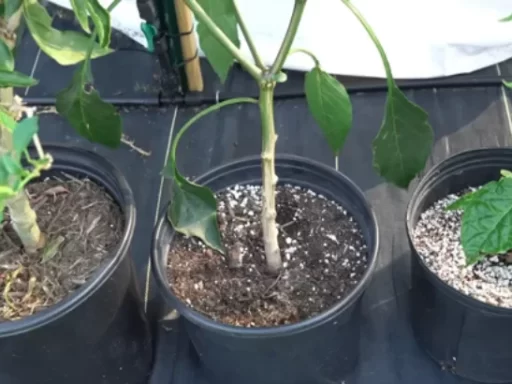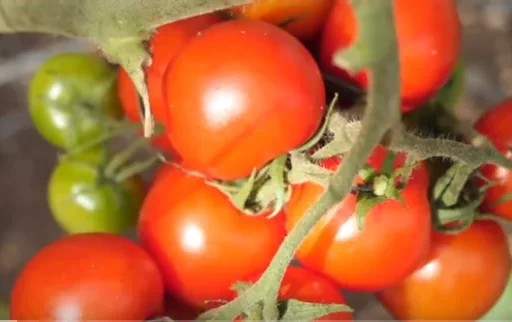Growing tomatoes in the fall can be a challenging task, but with the right techniques, you can achieve a successful harvest. For gardeners, especially those in warmer climates like Southeastern North Carolina, preparing for fall planting begins as early as mid-summer. Below are five key secrets to successfully grow tomatoes during the fall season.
1. Choose the Right Tomato Variety
One of the most important steps in growing fall tomatoes is selecting the right variety. Indeterminate tomatoes, like the popular Beefsteak varieties, are often grown in the spring and are known for their vine-like growth. These tomatoes continue growing until frost or disease kills them, focusing half their energy on producing green foliage rather than ripening the fruit. For fall, this is not ideal, as warm weather becomes increasingly limited.
Instead, determinate tomatoes are a better option for most fall gardeners. Determinate tomatoes grow to a set height, usually between two and four feet, and focus all their energy on ripening the fruit once they reach their full size. This allows them to ripen much faster, which is crucial as fall temperatures begin to drop. Some excellent determinate varieties for fall include Legend, Red Snapper, and Celebrity.
A key exception to the determinate rule may be cherry tomatoes, especially early-ripening varieties like Sun Gold or Super Sweet 100. Since these fruits are smaller, even indeterminate cherry tomatoes can ripen effectively in the fall.
To find out whether your tomato variety is determinate or indeterminate, simply check the seed packet. If you don’t have the packet, a quick online search will provide the information.
2. Timing is Everything for Transplanting
Timing is essential for fall gardening, particularly for tomatoes. You need to plant your transplants outdoors while it’s still warm. In spring, the increasing temperatures and sunlight intensity help tomato plants thrive. But in the fall, days get shorter, and the sun’s strength diminishes, so your plants must establish themselves while it’s still hot.
Typically, tomato transplants should be about six weeks old before planting them outdoors. For example, if you plan to plant them in mid-August, you need to start the seeds by mid-to-late June. For those in regions with milder winters, such as South Florida or Southern California, this schedule can vary, but for most gardeners, starting seeds too late will result in a poor harvest.

If you didn’t start your seeds in time this year, don’t worry—use this schedule to plan for the next season. Generally, tomatoes need 90 to 100 days from transplanting to produce mature, ripened fruit. So, take note of your area’s first frost date and count backward 100 days to determine your planting schedule.
3. Use Disease-Free Soil or Growing Medium
Another crucial secret to growing healthy fall tomatoes is to plant them in a fresh, disease-free growing medium. Avoid planting your tomatoes in soil where other nightshade family plants (such as tomatoes, peppers, potatoes, or eggplants) have been grown recently. These plants share many of the same diseases, and reusing soil could increase the risk of disease transmission.
One highly effective solution is to plant tomatoes in conditioned straw bales. Straw bales offer a sterile environment, reducing the chance of disease. Preparing straw bales takes about two weeks, during which you season them by wetting and fertilizing them. Once prepared, these bales provide an ideal growing medium that keeps your tomatoes relatively disease-free.
4. Proactively Manage Tomato Diseases
Disease management is essential for a successful fall tomato crop. Many tomato diseases can persist from previous crops or nearby plants. Therefore, removing any diseased plants around your garden is critical. If old, diseased tomato plants are still in the garden, their fungal spores or bacteria could spread to your new crop.
Pay particular attention to other nightshades such as peppers and eggplants. These plants can harbor the same diseases that affect tomatoes, so it’s important to inspect them closely and, if necessary, move your tomato plants farther away from any diseased crops.
Additionally, if your tomatoes are planted near other crops like cucumbers or squash, they could share diseases with them as well. Keep a close eye on your plants and be sure to remove diseased plants as soon as they appear to prevent contamination.
5. Heat Management for Early Transplants
Fall weather can be unpredictable, especially when it comes to heat. Many gardeners make the mistake of waiting until cooler weather to plant their tomatoes. This often results in the plants not getting enough heat to ripen the fruit before cold weather arrives. It’s better to plant your tomatoes earlier, even if the weather is still hot.
To manage excessive heat, consider using a 40% shade cloth over your tomato plants. This will protect them from the scorching sun, allowing them to establish strong roots and start producing fruit while the weather is still warm. By using shade cloth, you create a controlled environment that ensures the plants don’t burn up in extreme heat.
Once the weather cools in mid-September, you can remove the shade cloth and let the tomatoes finish ripening in the gentler autumn sun. This strategy gives your tomatoes a head start on the season, preventing a late planting disaster when it’s too cold for ripening.
Frequently Asked Questions
- When should I plant fall tomatoes?
Fall tomatoes should be planted about 90 to 100 days before your region’s first frost date. This means mid-to-late summer for most areas. - What tomato varieties are best for fall?
Determinate varieties like Legend, Red Snapper, and Celebrity are ideal for fall due to their shorter growing season and ability to ripen faster. - Can I use the same soil as my spring crop?
It’s best to use new, disease-free soil or straw bales to avoid reintroducing diseases from previous crops, especially if you’ve grown other nightshade plants. - How do I protect my tomatoes from late summer heat?
Using a 40% shade cloth over your tomato plants helps shield them from the intense summer sun, ensuring they can thrive even in hot weather. - Is it too late to plant fall tomatoes in August?
In most regions, August is still a suitable time to plant fall tomatoes, provided you use fast-maturing varieties and manage the heat with shade cloth. - What happens if my tomatoes don’t ripen before frost?
If frost arrives before your tomatoes ripen, you can harvest green tomatoes and store them in a cool, but not freezing, environment to ripen gradually. - Why are my tomato plants getting diseases?
Tomato diseases often come from infected soil or nearby plants. Ensure you plant in fresh soil and remove any diseased plants nearby to prevent contamination.





